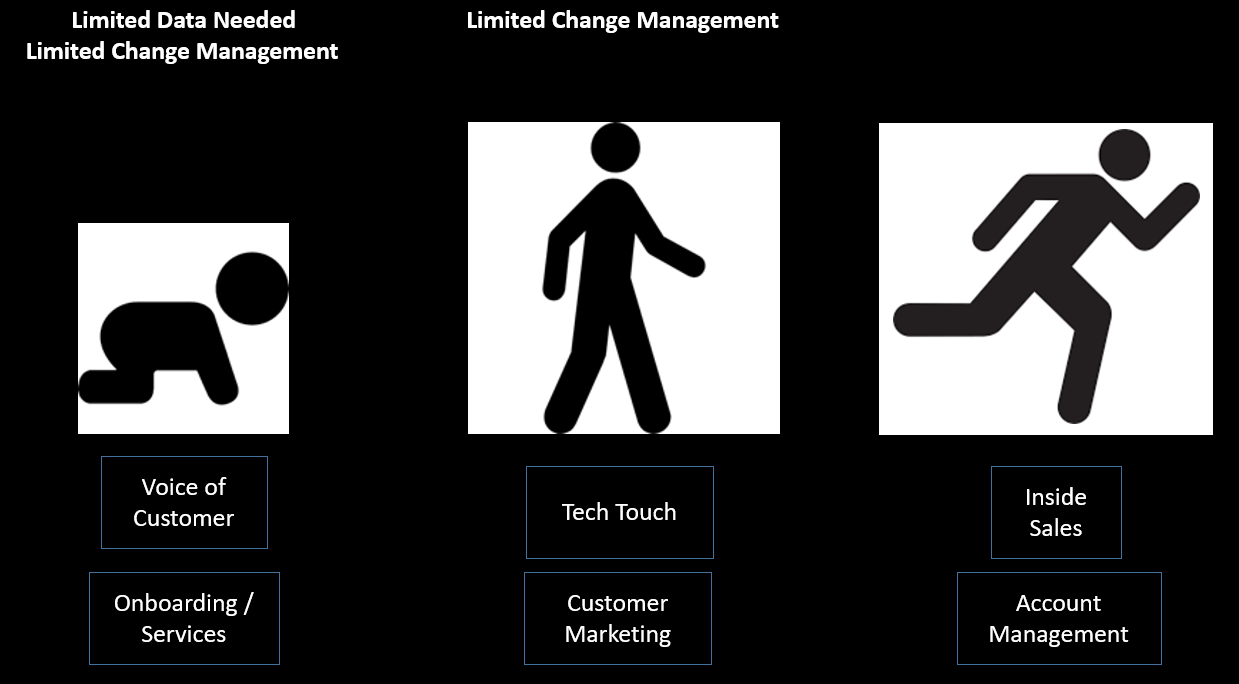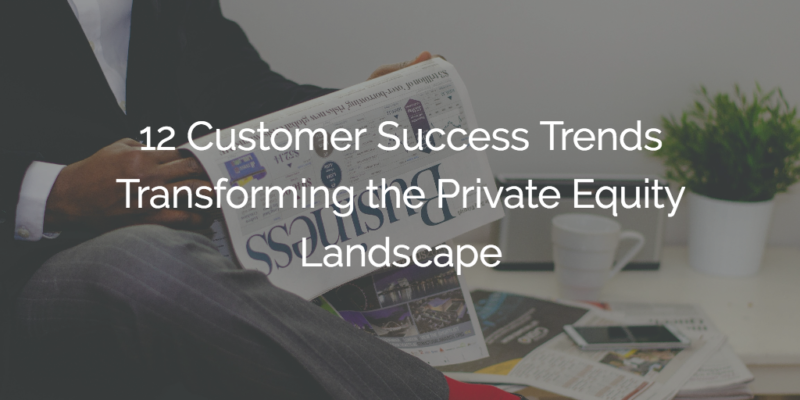If you follow the M&A markets, you know that Private Equity firms have had an expanded role in the technology market.
Traditionally, Private Equity firms had been known for cutting operating expenses at their investments—identify companies with slower top-line growth (and thus lower shareholder value) and trim operations in order to maximize cash flows.
But increasingly, many of these same PE shops have an increased focus on the opportunity to leverage technology within their portfolios to drive topline growth.
Private Equity firms are more involved than ever in operations and take a holistic view, just as any mature independent company would: find new “plays” to drive growth, operational effectiveness, and efficiency in portfolio companies.
And given that Customer Success is proven to be a massive driver of growth and shareholder value, it’s no surprise that PE firms have embraced CS.
At Gainsight, we have 60+ PE-backed companies as customers.
Furthermore, we’ve been asked to present to dozens of PE portfolio companies about best practices in Customer Success.
As an example, last week I was asked to present to the CFOs of portfolio companies in a top Private Equity firm. Below are some of my learnings:
1. Customer Success is a clear value driver in Private Equity.
Based upon the number of PE firms that have asked us to talk about Customer Success, it’s obvious that PE investors get the link between Customer Success, gross/net retention, and shareholder value.
In this particular case, we were the only tech company asked to present during a two-day agenda. I had a chance to see some of the previous presentations, and renewal rates were a HUGE topic of discussion.
2. PE-backed companies don’t need to be convinced about what or why, but rather how.
Contrary to my standard conference talk—less about Gainsight and more about the “Customer Success Movement”—the organizers of this event wanted me to dive into systems/technology and keep the focus there. The audience of CFOs was very engaged in terms of what resources are needed, how to address data issues, the effort of change management, etc.
3. The limitations in existing systems are apparent to PE-backed companies.
At Gainsight, we talk about four fundamental challenges in Customer Success, which together necessitate a separate platform:
- Modeling clients the way they experience you (by department, business unit, product, stakeholder), not just in the way you sell to/bill them.
- Blending a variety of data (telemetry, usage, analytics, surveys, support, CRM, billing, etc.) to holistically measure the customer experience.
- Analyzing this data in a scalable way to measure customer health in all dimensions.
- Driving proactive human and digital outreach along the customer journey.
Nearly every firm had experience trying to cobble together CRM, BI, spreadsheets, and the like—and the scalability limitations therein.
4. PE-backed firms don’t want to reinvent the wheel.
Since these companies are so efficient, they don’t build internal tools “for the fun of it” when third-party vendors are available. In fact, Private Equity groups often guide portfolio companies to standardize on a common “stack” of third-party business systems.
5. Many portfolio companies are already sophisticated.
Seven portfolio companies at this event already used Gainsight and several of them were “power users.” One shared an impromptu story about how much value Gainsight has driven for the team and demonstrated some creative use cases for Gainsight that even I hadn’t seen before.
6. PE portfolio companies rely on opinions of other firms in the portfolio.
CFOs (or any other leaders) rely on the opinion and experience of their fellow CFOs. When looking at new software, they will call the CFOs that already have this software deployed at their firms. If the vendor has not delivered upon the outcomes it promised, that CFO won’t buy the software.
7. A vendor isn’t relevant across the portfolio until it proves wins.
A PE-firm won’t ask a vendor to present to the portfolio or talk about a broad portfolio-wide initiative until it has demonstrated the ability to move key KPIs in a handful of portfolio companies. Delivering upon Customer Success outcomes at scale opens the door to a broad portfolio-wide opportunity.
8. Predictability is a unique focus for PE portfolio companies.
While the normal benefits of platforms were discussed (scale, automation, metrics), a word that came up over and over again was “predictability.” These businesses are focused on operational excellence, and it was obvious.
9. The budgeting cycle is now.
Many firms with calendar year ends start budgeting cycles and reorg processes in September. These firms typically engage in refresh and take action in October. That means sales discussions (whether net-new logo, expansion, or upsell) should happen now.
10. Value provided needs to be much greater than change management.
CFOs (and many functional leaders) are highly cognizant of IT processes and the amount of change management and data required for a solution. It sounds simple, but the value you demonstrate should be much greater than the amount of change management and data transformation effort needed. Many IT departments only have the capacity for two or three significant projects per year. If your solution isn’t strategic enough to get in the top two or so, break your product down into smaller modules.
11. Everyone wants to know how to get started.
Building on the note before, a key question from the group was around how to “crawl/walk/run” with CSM platforms.
I talked about our new set of Gainsight Solutions to let clients start with smaller and simpler parts of Customer Success on a journey to the full vision.

12. PE firms that aren’t talking about this are behind the times.
As I mentioned, a huge chunk of major PE firms have already reached out to us about Customer Success education, so it’s encouraging to see how mainstream this has become.
– – – –
Still grappling with Customer Success from a PE perspective? Gainsight is here to help—don’t hesitate to reach out.

